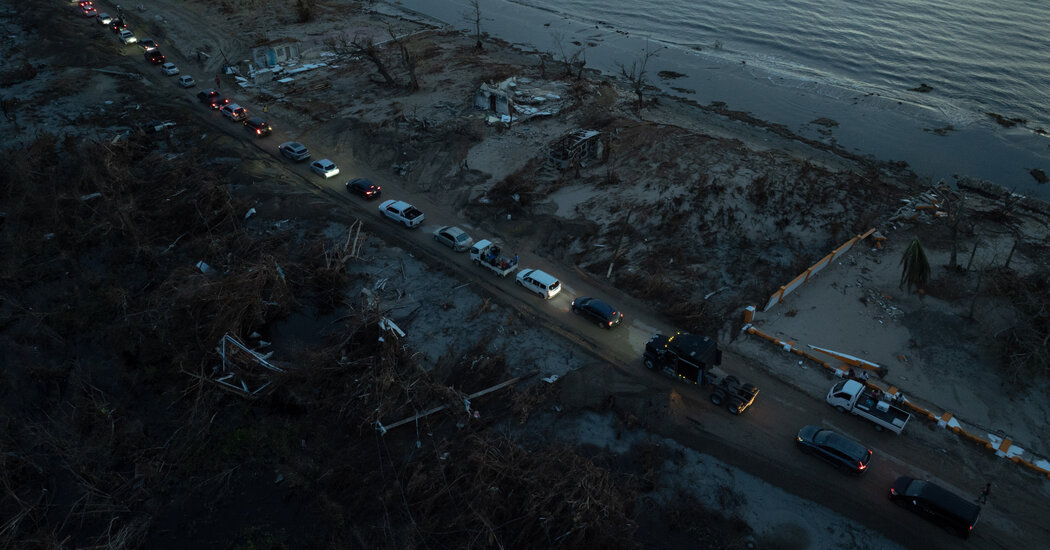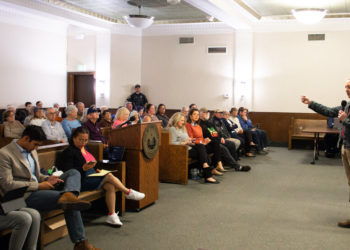The death toll in Jamaica from Hurricane Melissa rose to 28 on Saturday, even as the authorities and humanitarian workers acknowledged that they had yet to reach dozens of communities that were hardest hit by the devastating storm.
The Jamaican government said on Saturday night that nine more deaths had been identified since the previous tally of 19. Additional reports of possible fatalities are still being verified, a government statement said.
Hurricane Melissa made landfall in Jamaica on Tuesday as a Category 5 storm, one of the worst in the country’s history. At least another 30 people were killed in Haiti, which was not directly hit by the storm but experienced severe flooding.
Many communities that were affected by the storm, especially in western Jamaica, have been cut off from the rest of the country by washed-out roads and downed trees. A vast majority of Jamaicans are still without electricity and telephone service, so authorities have no real idea how many people died in many areas of the country, several people involved in rescue operations said.
In St. Elizabeth Parish, in the southwest of the island, Fire Superintendent Kimar Brooks said the authorities had not reached about 15 of the parish’s roughly three dozen communities. Blockages have cut some towns off, Coleridge Minto, the police superintendent of St. Elizabeth, said Saturday. At least seven deaths have been officially reported in the parish, he said.
Esther Pinnock, a spokeswoman for the Jamaica Red Cross, said there were isolated communities in five other parishes that sustained significant damages.
“There are a significant number of communities that have not been reached,” she said, noting that some of them had small pockets of people. “We don’t know the true picture of what is happening in the western parishes.”
Ms. Pinnock said that it was only on Saturday — four days after Hurricane Melissa made landfall — that the Red Cross began hearing from its branch members in western parts of the country.
“There is a strong possibility that more dead bodies will emerge,” she said, “and as a result of that, a heightened death toll.”
John Lyon, the executive director of the nonprofit Haiti Air Ambulance, which has been conducting rescues and delivering satellite internet devices in remote areas, said the current death toll was an early “estimate.”
Mr. Lyon flew to cutoff communities by helicopter and said that people had told him that some of the storm’s dead were still in their collapsed houses. The coalition of organizations he is working with, Operation One Love, airlifted one person on Saturday who later died, he said.
“That’s a microcosm of what I think happened throughout western Jamaica,” Mr. Lyon said. “This is one of the worst disasters I have ever seen.”
But he stressed that the U.S. military and various nonprofit organizations were bringing more helicopters into the country, which should help survivors get medical attention and shed light on how many people had actually died.
He said that the Jamaican authorities had asked if his coalition could help recover bodies, but that he had told them, “You’re still in search and rescue mode.”
Desmond McKenzie, Jamaica’s minister of local government, said that more than 500 roads had been cleared, opening up blocked neighborhoods.
“Work is being done, but the challenges here are extreme,” he said.
Daryl Vaz, Jamaica’s minister of energy and transportation, said that the government, military and nonprofits would coordinate to reach as many people as possible.
“So I would say to all of those persons who are still out there waiting and looking up in the sky, that you will start to see movements today, and you’re going to hear a lot of activity,” Mr. Vaz said on Friday.
“You probably are feeling that you are forgotten,” he added. “You are not forgotten, and you will never be forgotten.”
Emiliano Rodríguez Mega contributed reporting.
Frances Robles is a Times reporter covering Latin America and the Caribbean. She has reported on the region for more than 25 years.
The post Communities in Hurricane-Ravaged Jamaica Still Cut Off as Death Toll Climbs appeared first on New York Times.




